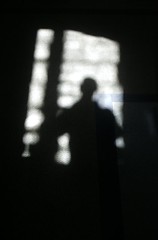From behind 2.30
Coleridge works his way towards the beginnings of a unified theory, the "great law of the imagination", that "a likeness in part tends to become a likeness of the whole": the brain is always busy recognizing, replicating, expanding, extemporizing and filling in the gaps. Under the right circumstances, humble decanters and inkstands can morph into human or demonic entities at which point they may do anything that such entities might be expected to do: walk, speak, wear evening dress or waggle their pointed tails [...] but, having tantalized himself and the reader, Coleridge announces reluctantly that he is unable to do it justice. "I have long wished to devote an entire work to the subject of dreams, visions, ghosts and witchcraft", he insists, and "I have indeed a memorandum-book filled with records of these phaenomena, many of them interesting as facts and data for psychology, and affording some valuable materials for a theory of perception and its dependence on memory and the imagination."
Labels: TLS


0 Comments:
Post a Comment
<< Home